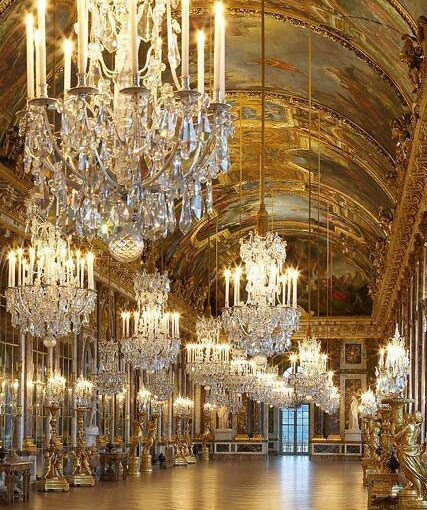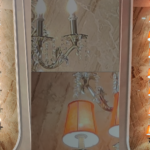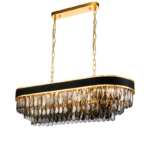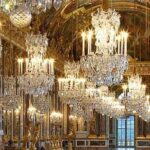Chandeliers have long been a symbol of opulence, luxury, and elegance. These magnificent lighting fixtures have adorned the grandest of spaces, from royal palaces to modern interiors. The history of chandeliers spans centuries, reflecting the evolution of design, craftsmanship, and the changing tastes of society.
The origins of chandeliers can be traced back to ancient times. The earliest forms were simple wooden structures adorned with candles, used primarily for practical lighting purposes. As civilizations advanced, so did the design and materials used in chandelier construction.
It was during the medieval period that chandeliers started to gain prominence as decorative pieces. Crafted from metal, such as bronze and iron, these chandeliers featured intricate designs and were often embellished with gemstones or colored glass. They were primarily found in churches, castles, and wealthy households, where they served as status symbols.
The Renaissance period witnessed a surge in artistic expression, and chandeliers were no exception. The designs became more elaborate and ornate, inspired by classical motifs and architectural elements. Crystals and glass prisms were introduced, allowing chandeliers to create dazzling displays of light and color. The size of chandeliers also grew, with some reaching enormous dimensions to fit the grandeur of palaces and ballrooms.
During the 18th century, chandeliers reached their pinnacle of splendor. This period, known as the Age of Enlightenment, saw a rise in craftsmanship and technical advancements. Crystal chandeliers became the epitome of luxury, adorning the most prestigious venues across Europe. The crystals were carefully cut and arranged to refract light in mesmerizing patterns, casting a mesmerizing glow over the surroundings.
As the Industrial Revolution swept through the 19th century, chandelier production underwent a significant transformation. The introduction of gas and, later, electric lighting revolutionized the way chandeliers were illuminated. The use of gas jets or electric bulbs replaced the traditional candles, making chandeliers more practical and accessible.
With the advancements in technology, chandelier designs diversified to cater to various architectural styles and interior trends. Art Nouveau brought a new wave of organic shapes and flowing lines, while Art Deco embraced geometric patterns and sleek forms. Chandeliers became an integral part of interior design, not only in palaces and stately homes but also in more modest residences.
In the modern era, chandeliers have continued to evolve, adapting to contemporary design aesthetics. Today, a wide range of materials, including metals, glass, crystals, and even unconventional elements like plastic and fabric, are used to create chandeliers. The designs vary from minimalist and sleek to bold and avant-garde, reflecting the diverse preferences of homeowners and designers.
Furthermore, chandeliers are no longer limited to grand ballrooms and formal spaces. They have found their way into residential homes, hotels, restaurants, and even outdoor areas. Chandeliers have become versatile lighting fixtures that can make a statement or create a specific ambiance in any room.
The history of chandeliers is a testament to the enduring allure of these magnificent lighting fixtures. From their humble origins as functional wooden structures to the dazzling crystal masterpieces of the past, chandeliers have remained a symbol of elegance and grandeur. Whether they are reproductions of historical designs or contemporary creations, chandeliers continue to capture our imagination and illuminate our spaces with their timeless beauty.







